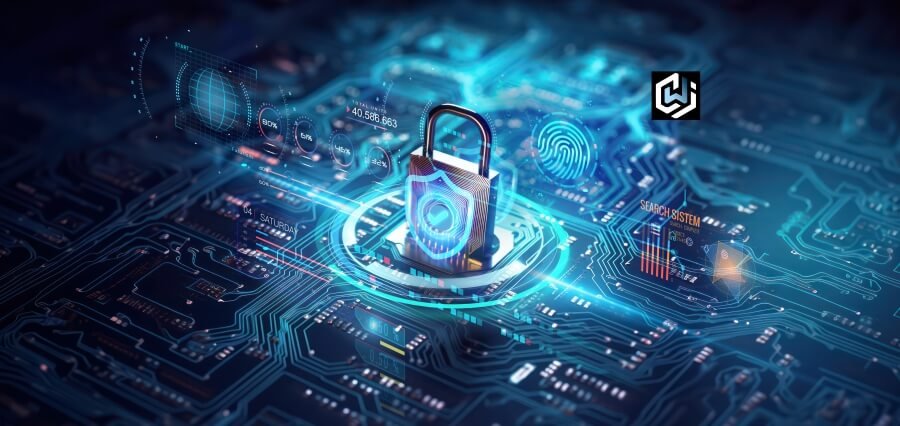Beyond Firewalls
The world online is evolving at a breakneck pace, and the tidal wave of sophisticated cyber threats is awaiting us in no time. The firewalls and perimeter security no longer have enough to keep it safe from individuals and businesses with regard to cyber attacks. In line with increasing threats and threat sophistication, solutions for cybersecurity have to increase in capability and capability as well. Next-gen cybersecurity goes beyond firewalls and employs artificial intelligence, zero-trust security frameworks, and threat intelligence to protect digital environments.
The Transition from Perimeter Security to Zero-Trust Architecture
Companies have employed firewalls and perimeter security models for decades to protect their networks. With cloud computing, remote workers, and interconnectivity growing more mainstream, hackers figured out how to work around those old defenses. Zero-trust security model has been the future game-changer that has made it so that no user or device is ever trusted simply because of where they’re located in a network.
Zero-trust security is driven by the principle of “never trust, always verify.” Access requests are absolutely channeled through rigorous authentication processes such as multi-factor authentication (MFA), identity proofing, and continuous monitoring. By doing this, only legitimate users access sensitive systems, cutting the risk of insider threats and unauthorized access enormously.
Artificial Intelligence and Machine Learning in Cybersecurity
Cyber hackers are adopting more sophisticated means of breaching security layers, and hence it has become crucial that cybersecurity measures be proactive rather than reactive. Machine learning (ML) and artificial intelligence (AI) have revolutionized the cybersecurity landscape by automating threat detection, real-time tracking, and delivering predictive analysis.
Cybersecurity tools that are artificial intelligence-based are capable of rapidly scanning large databases for patterns and anomalies that foreshadow attacks to come. Solutions that are powered by AI are capable of identifying new forms of attack before they can do irreversible damage. All these capabilities are complemented by machine learning, which enables the systems to continue learning from past experiences with threats, sharpening their ability to identify malicious behavior.
Cloud Security and Adaptive Protection Requirements
As companies move to cloud business, cloud security is a pressing issue. Cloud computing provides scalability and flexibility but new security issues. Next-generation cybersecurity providers have created next-gen solutions that protect cloud infrastructure using encryption, secure access protocols, and automated compliance monitoring.
Cloud security solutions with adaptability allow organizations to protect sensitive data in several cloud platforms. SASE architectures integrate network and security features into a single cloud platform that provides in-real-time security to remote users, applications, and data.
Predictive security measures and threat intelligence
Cyberattacks today are not just direct attacks. APTs, ransomware, and phishing attacks are increasingly common and sophisticated. Next-generation cybersecurity solutions utilize threat intelligence systems to predict, detect, and neutralize such threats before they occur.
Predictive security tools use real-time data analysis to identify patterns of cyberattacks. Cybersecurity organizations are able to monitor global patterns of threats based on this data and forecast potential threats, which allows them to create countermeasures. Automated response systems assist organizations in blocking threats in real time, preventing the impact of security breaches.
Blockchain Technology for Cybersecurity
Blockchain technology is becoming a potent cybersecurity tool with its decentralizing and immutable platform to safeguard digital transactions and data. It enhances security by making data impossible to modify or tamper with without one’s consent.
Organizations are using blockchain to manage identities, authenticate, and secure communications. Its cryptography-based security model allows fraud prevention, data breaches prevention, and intrusion prevention. The more pervasive the use of blockchain, the greater its role will be in protecting financial transactions, supply chains, and digital identities.
Endpoint Security in an Era of Remote Work
The growth of telecommuting augmented the attack vector for cyber adversaries. Laptops, cellphones, and IoT devices used by employees working in non-traditional office spaces usually lack strong security practices to follow. Endpoint security products became the pillars guarding such extended networks.
Sophisticated endpoint security solutions adopt AI-driven monitoring, behavioral analysis, and real-time threat detection to protect devices against phishing, ransomware, and malware attacks. Endpoint security can help companies maintain a robust security posture even in remote offices.
Cybersecurity in IoT Ecosystems
With the proliferation of IoT devices, new cybersecurity threats are unfolding. In most IoT devices, there are no in-built security features and so they become a soft target for hackers. Emerging future-proof cybersecurity solutions target the IoT ecosystems protection through network segmentation, device authentication, and real-time monitoring.
IoT devices’ cybersecurity requirements focus on automating the detection of threats, securely updating firmware, and encryption. With increased interconnectedness of devices through IoT, efficient security programs will be the norm to prevent large-scale cyberattacks on industrial systems, utilities, and smart homes.
The Future of Cybersecurity Innovation
Cybersecurity will evolve in accordance with future threats. Quantum encryption for highly secure communication, self-healing networks that repair vulnerabilities in real-time, and AI-driven cybersecurity solutions that can defend against threats without human interference are some of the emerging technologies that may be employed in the future.
Governments and regulators are also implementing stricter cybersecurity regulations to compel organizations to give data safety the top priority. With digitalization in top gear, cybersecurity will always be on the agenda of organizations, governments, and people.
Conclusion
Future cybersecurity solutions move a step further than firewalls by including AI-based threat discovery, zero-trust security models, blockchain, and predictive analytics. The complex characteristics of cyber attacks today call for evolvable and predictive security approaches to protecting core data, cloud platforms, and networked infrastructure. With business being conducted in the dynamic world of digital networks, next-generation cybersecurity methods will be needed in controlling threats and ensuring long-term security.





